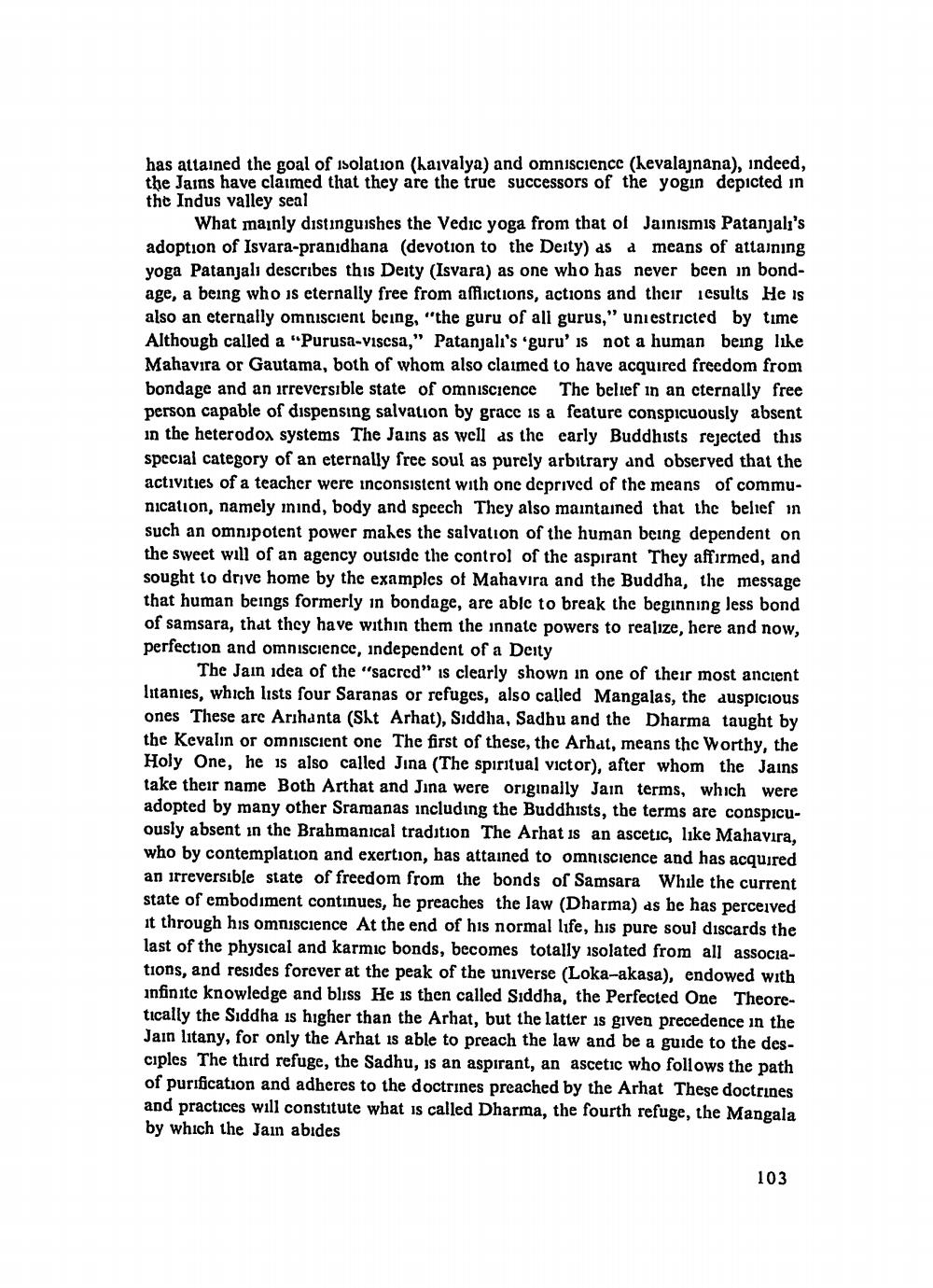________________
has attained the goal of isolation (haivalya) and omniscience (hevalajnana), indeed, the Jains have claimed that they are the true successors of the yogin depicted in the Indus valley seal
What mainly distinguishes the Vedic yoga from that of Jainismis Patanjali's adoption of Isvara-pranidhana (devotion to the Deity) as a means of attaining yoga Patanjali describes this Deity (Isvara) as one who has never been in bondage, a being who is eternally free from afflictions, actions and their results He is also an eternally omniscient being, "the guru of all gurus," uniestricted by time Although called a "Purusa-viscsa," Patanjali's 'guru' is not a human being like Mahavira or Gautama, both of whom also claimed to have acquired freedom from bondage and an irreversible state of omniscience The belief in an cternally free person capable of dispensing salvation by grace is a feature conspicuously absent in the heterodox systems The Jains as well as the early Buddhists rejected this special category of an eternally free soul as purely arbitrary and observed that the activities of a teacher were inconsistent with one deprived of the means of communication, namely mind, body and speech They also maintained that the belief in such an omnipotent power makes the salvation of the human being dependent on the sweet will of an agency outside the control of the aspirant They affirmed, and sought to drive home by the examples of Mahavira and the Buddha, the message that human beings formerly in bondage, are able to break the beginning less bond of samsara, that they have within them the innate powers to realize, here and now, perfection and omniscience, independent of a Deity
The Jain idea of the "sacrcd" is clearly shown in one of their most ancient litanies, which lists four Saranas or refuges, also called Mangalas, the auspicious ones These are Arihanta (Sht Arhat), Sıddha, Sadhu and the Dharma taught by the Kevalin or omniscient one The first of these, the Arhat, means the Worthy, the Holy One, he is also called Jina (The spiritual victor), after whom the Jains take their name Both Arthat and Jina were originally Jain terms, which were adopted by many other Sramanas including the Buddhists, the terms are conspicuously absent in the Brahmanical tradition The Arhat is an ascetic, like Mahavira, who by contemplation and exertion, has attained to omniscience and has acquired an irreversible state of freedom from the bonds of Samsara While the current state of embodiment continues, he preaches the law (Dharma) as be has perceived it through his omniscience At the end of his normal life, his pure soul discards the last of the physical and karmic bonds, becomes totally isolated from all associations, and resides forever at the peak of the universe (Loka-akasa), endowed with infinite knowledge and bliss He is then called Siddha, the Perfected One Theoretically the Siddha is higher than the Arhat, but the latter is given precedence in the Jain litany, for only the Arhat is able to preach the law and be a guide to the desciples The third refuge, the Sadhu, is an aspirant, an ascetic who follows the path of purification and adheres to the doctrines preached by the Arhat These doctrines and practices will constitute what is called Dharma, the fourth refuge, the Mangala by which the Jain abides
103




